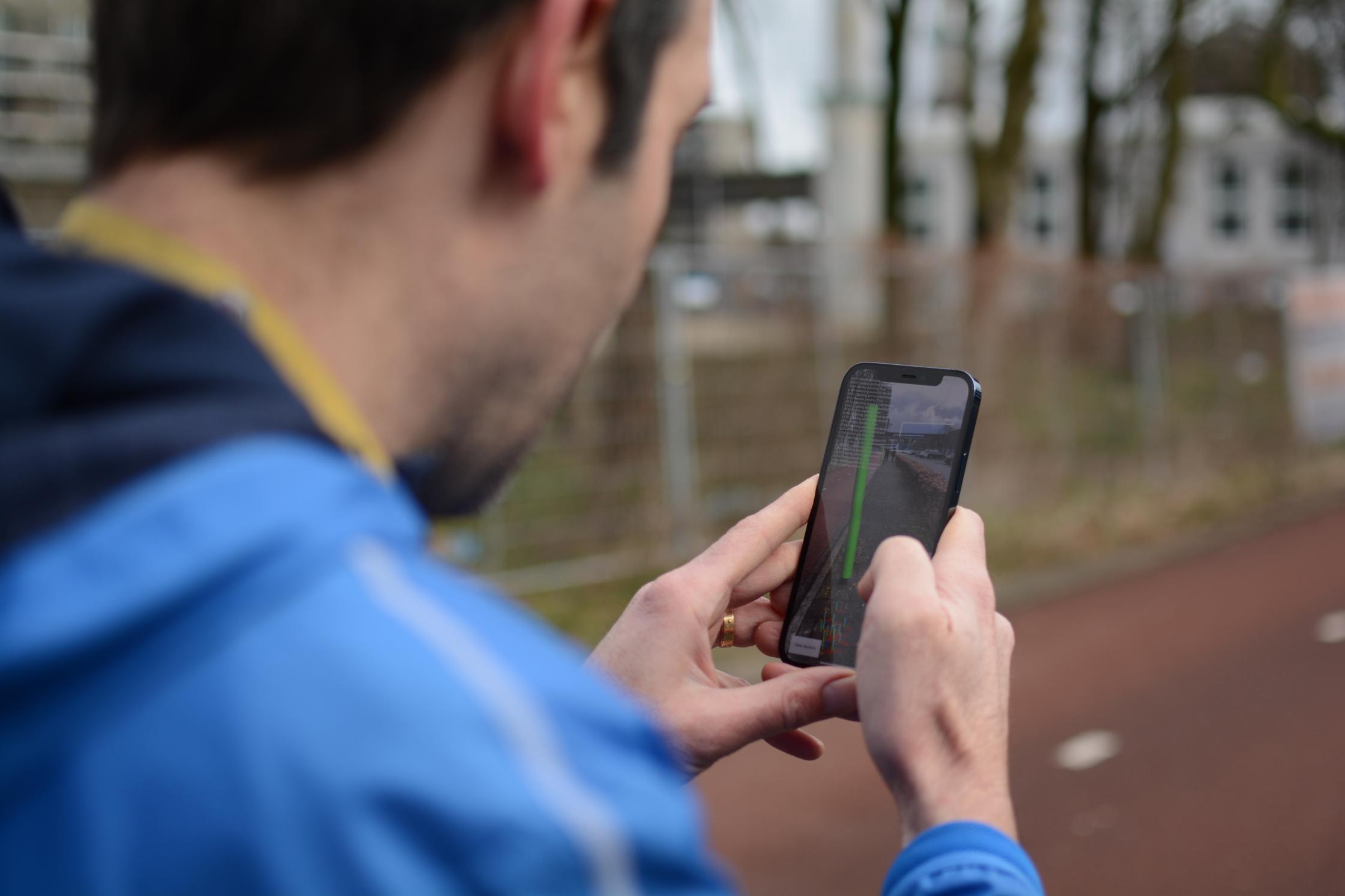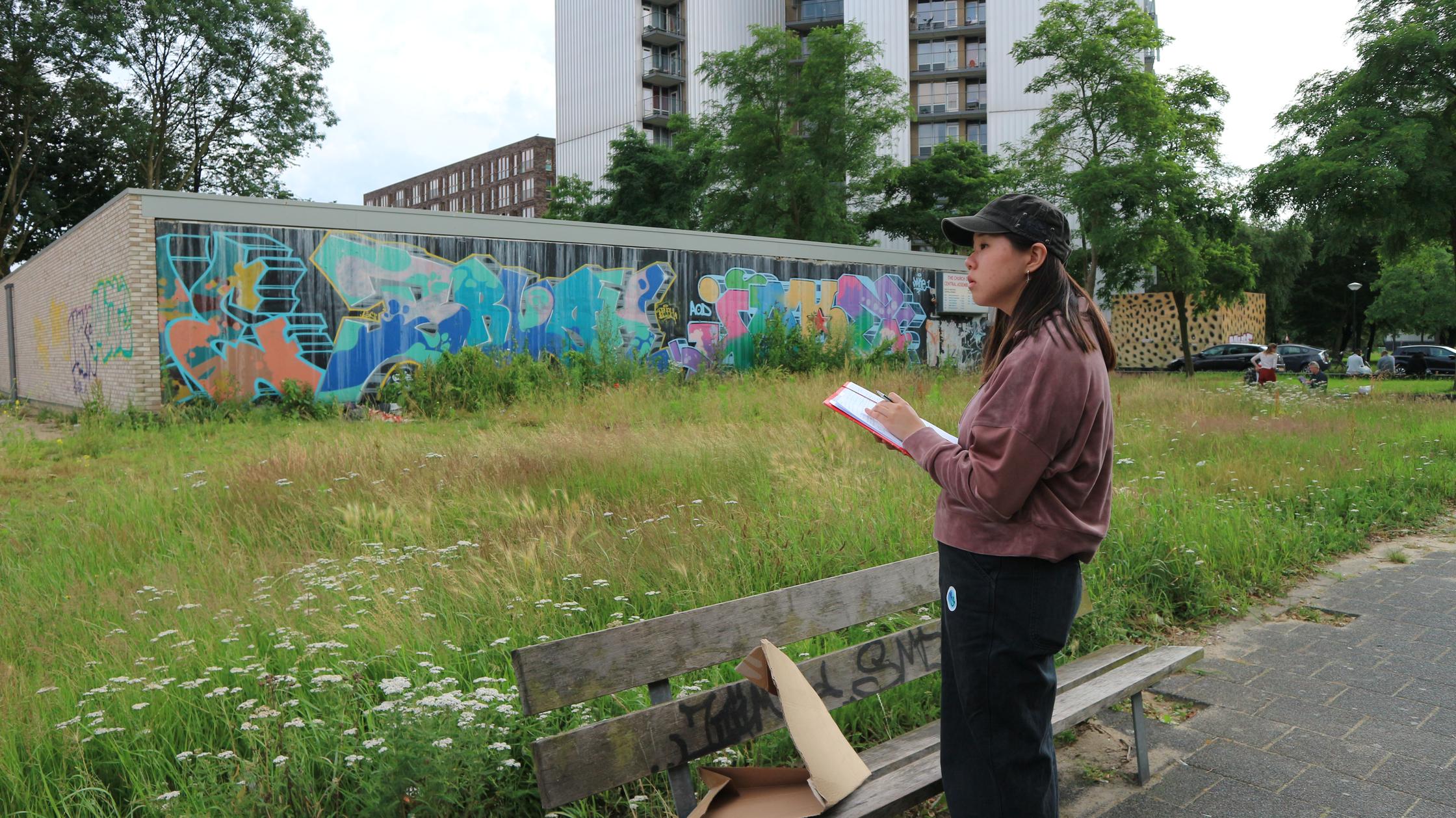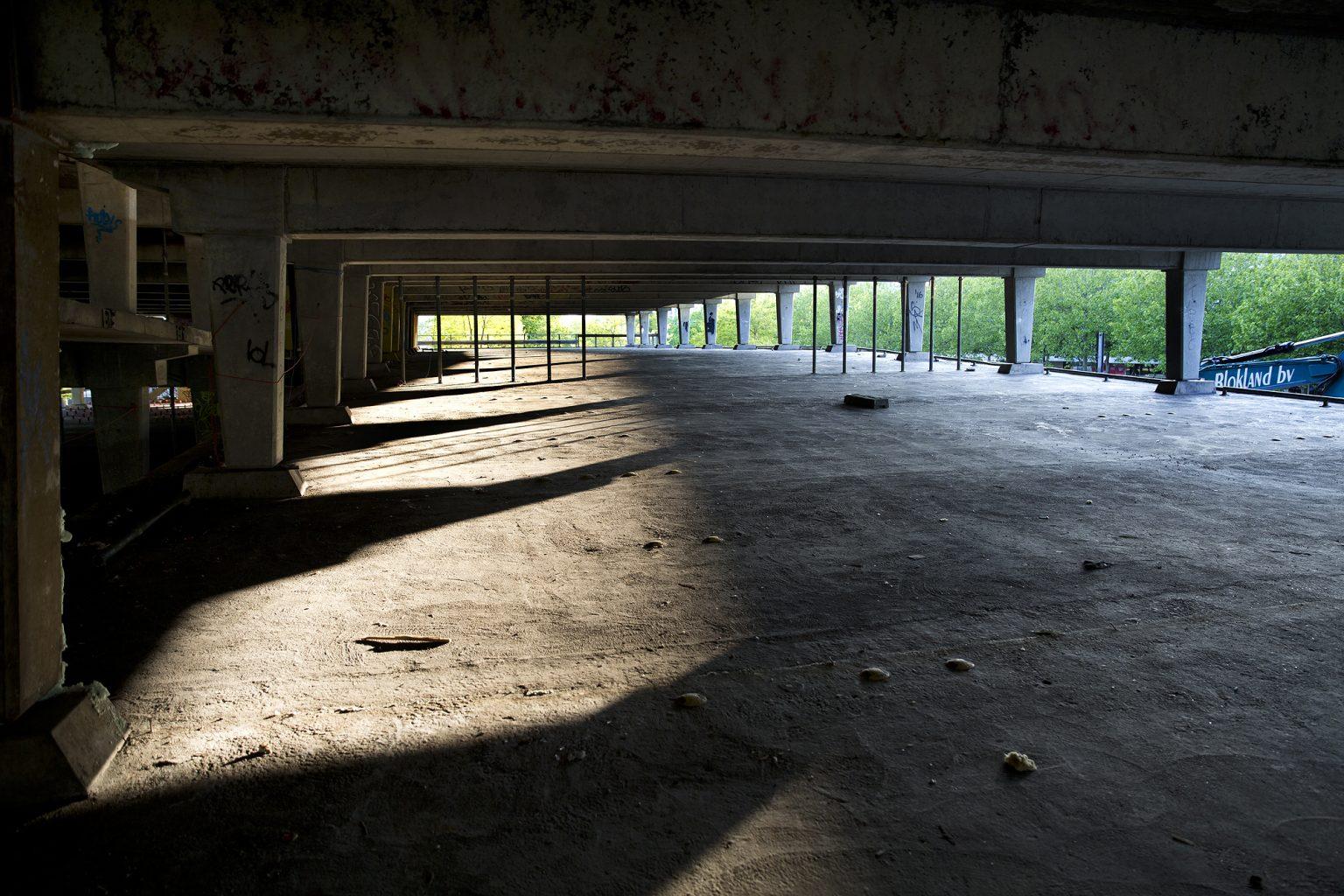Shelly Chuang, intern for Waag’s Mixed Reality for Heritage project, tested out the newly developed prototypes at Garage Kempering in Amsterdam Zuid-Oost, which encourages users to explore the past of the garage by moving towards pictures scattered in the plot. She experienced that Mixed Reality enabled her to step out of her comfort zone and break social codes. In this blog, Shelly shares how that works.
In the three years I have lived in the Netherlands, I haven’t had a reason to visit Bijlmer Oost until the beginning of March this year. The 53 metro line towards Gaasperplas showed me a completely different image of Amsterdam, and across from the busy Kraaiennest metro station, there is an empty lot that stands out abruptly in the crowded and lively neighbourhood K-buurt. This is where the Garage Kempering used to be.
As an intern for Waag’s Mixed Reality for heritage project, I had the opportunity to test out our newly developed mixed reality prototypes for this location. Rather than speaking about the techniques of these demos (which has already been discussed in a previous article), or the stories collected by Waag, I want to use this opportunity to focus on my experience as a user. The testing encourages me to contemplate on one very important issue: social codes and contexts.
The Times We Live in
As we all know, we are facing more challenges than ever in the year 2021. As an Asian woman living in a foreign country during this crisis, I have grown increasingly more anxious about being in public spaces, since Asian communities across the globe have been targets of misdirected discontent of our current crisis — even though I know Amsterdam has always made me feel safe and welcomed.
So on that day, I got on the metro with anticipation to meet my colleagues in person for the first time and to see first-hand this new and exciting technology at work on the one hand, and concerns around being in a new public space, on the other. Not just for my health, but a social anxiety that is (and has always been, despite of the pandemic) deeply rooted in my womanhood and my ethnicity. But you don’t have to be a woman of colour to relate to that anxiety: anyone would feel a little lost or self-conscious drawing attention to themselves in an unfamiliar place. And drawing attention to myself was exactly what I did that day.
‘Our social behaviours have always been influenced by the very materiality of our city. Architecture is never only an aesthetic preference — it governs our everyday lives and impacts how we define our ideal community’
Lineplay
I started with the demo that utilizes the old map of K-buurt to project several three-dimensional models of high-rise buildings, garages, and the walkways connecting the two (that had since been torn down) at their original locations. I was quite shocked to see such a different style of architecture juxtaposed with the current urban landscape. This augmentation application showed me a K-buurt that would have hidden me from the main street, and reduce visibility of my activities. This realization reminded me that our social behaviours have always been influenced by the very materiality of our city. Architecture is never only an aesthetic preference — it governs our everyday lives and impacts how we define our ideal community.
Collage Kempering
This demo encourages users to explore the past of Garage Kempering by moving towards pictures scattered in the plot. When users walk up to any individual photo, they trigger recorded audio that completes the story together with the visual material. Unfortunately, I didn’t get to fully experience this demo as intended, since my Dutch ability hasn’t progressed past simple exchanges at the supermarket. But having only the visual materials as guides actually left me with a lot of room to imagine the state of the garage before and after the moment each picture were taken. This unintended outcome also urges us to scrutinize further how each individual user can complicate the ways in which technology functions.
The metal fence that is currently enclosing the plot also greatly impacted my testing experience. There is no more definitive tool for carving out social rules than fences and gates: they demarcate a space as inaccessible and enforce hard boundaries. The fence surrounding Garage Kempering had an opened gate on that day, and no signs designating the lot as private, but still the mere presence of fence communicates exclusivity of this space. This, sadly, deterred me from fully exploring the stories mixed reality had to offer.
Forced perspective
The last demo asks users to seek out the faded stories of Garage Kempering by solving a little perspective puzzle to piece together images. Since these pictures were projected on a higher level and were quite large, I had to climb up onto the elevated tree planter digitally align the images. The tree planter faces the only currently remaining part of the garage, the Pentecost Church. In this gesture of entering a space that has been socially coded as off-limits, in that moment, I was free of my fear and worries that had been brewing for months. I didn’t even realize how odd I must have seemed to passer-by! I was not thinking about if I might be inviting unwanted attention because all I could focus on was the puzzling heritage of Garage Kempering!
That simple act of stepping onto somewhere I was not supposed to was so strangely empowering: these mixed reality prototypes enabled me to feel okay — even confident — about making a public spectacle of myself, because I was far too invested in learning more about heritage of the site to even realise the limits of social contexts.
Breaking social codes
The day of testing was a day of stepping out of my comfort zone, of claiming more public spaces than I felt I am allowed. Not only did I circle around an empty and fenced off plot of land seemingly pointlessly, I was also alarming others by holding a phone at other people’s face level. The awkwardness soon disappeared though, and I became completely fascinated by these digitally re-negotiated realities, too captivated to feel constraint by social codes.
I truly enjoyed learning more about this recent, unconventional heritage. I appreciated how the prototypes enable dynamic and unconventional storytelling, because it engaged me in a deeply personal and physical way — it became more than a digital experience, teaching me not only heritage of Garage Kempering, but also making me aware of social constructs of urban spaces. In turn, I was able to let go of my self-consciousness, and felt inspired and liberated.
Looking back at my experience that day, I realised that social contexts played a significant role in how I interacted with mixed reality technology. My paradoxical actions and feelings regarding the second and last demo demonstrate quite clearly how different level of active engagement impacts our willingness to explore the memories and heritage associated to a place that is already lost.
My experience with the prototypes was by no means a fully comfortable experience, but this anxiety also challenges my boundaries and positions in everyday social landscape. Is it not liberating and impressive to know technology can actually be designed and utilized in ways that allow for such socially rooted experiences — while also triggering desires to investigate deceptively ordinary site and to engage with memories of the margin?


